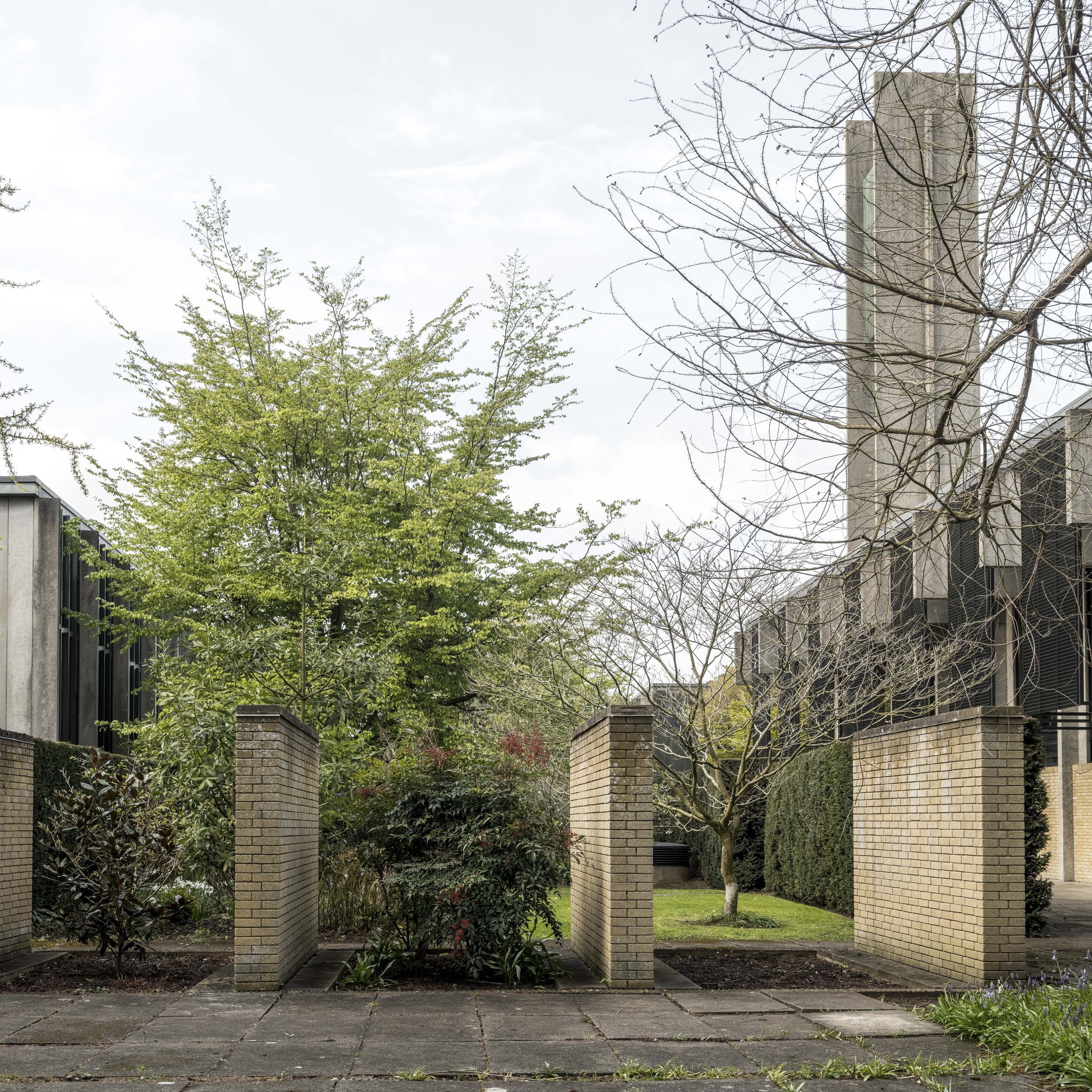St. Catherine’s College - A work of mathematical poetry
It was only as an adult that Tobias Jacobsen really got to know St. Catherine’s College in Oxford. In this post, he talk about his grandfather’s exceptional and much-loved work of architecture and its current life with today’s students.
My grandfather’s own favourite among all his works of architecture, the one he was most delighted to put his name to, was St. Catherine’s College in Oxford. In this design, he was able to combine traditional, classical elements – pointing all the back to the founding of the university in the 13th century – with a contemporary expression.
A Human Learning Environment
In 1956, English historian and founding Master of the College Lord Alan Bullock convinced the University of Oxford to build a new college. After touring sites in the United States and England for inspiration, Lord Bullock and building inspector Jack Lankester also visited selected Danish locations, including eight of my grandfather’s projects. The Munkegaard School in Vangede, north of Copenhagen, was the turning point. Lord Bullock and Lankester fell for its light, humane atmosphere encapsulated in an orderly architectural system. Even though the school had a capacity of up to 1,000 pupils, the logical flow of single-storey buildings and richly planted atriums formed a welcoming learning environment on a human scale.
Photos by Rasmus Hjortshøj
St. Catherine’s College was built in 1960–63, but I only really get to know it some 20 years later, a decade after my grandfather’s death. My engagement with the place began when my father gradually began to include me in projects related to my grandfather’s work. St. Catherine’s College wanted to modernize the window sections. My father was involved in this retrofitting project and brought me along a trip to Oxford. As I approached the college, I did not see the beautiful architecture. Instead, what leapt out at me was the traces of student life: laundry hung up to dry in the windows, milk cartons and sloppy curtains. Slowly, over many visits, I developed a greater love and understanding of the place as a gesamtkunstwerk, a total work of art, that beautifully combines architecture, design and garden architecture.
Squares and Repetition
Today, St. Catherine’s College is one of the places where I feel my grandfather’s presence the strongest. Arriving on foot from the station, you walk through Oxford, passing the traditional medieval buildings with tall, narrow windows, narrow passages and large book shops.
Then you reach a low structure, with buildings at eye level. Not tall, majestic and authoritarian. A human scale.
You see the systematic modular structure of squares. With its vertical repetition, symmetry around a strict axis and quadrangles, it follows the tradition for British university architecture dating back to the 13th century. You arrive at the park and garden, where canals, flowers, trees and hedges are placed according to my grandfather’s plan. Narrow passages offer private, secluded spaces, and a Roman theatre is tucked away in the back. In summer, there is an abundance of flora, both in the garden and inside the buildings, where floor-to-ceiling windows allow nature to wander in.
Photos by Rasmus Hjortshøj
Garden Architecture as Music
In line with, for example, his own private garden in Søholm and the garden at the National Bank of Denmark, seen from above, the garden architecture forms a strictly ordered plan, but at eye level, it is organic, rhythmic, beautiful, poetic and melodic. My grandfather was a gifted gardener and garden and landscape architect. He had a deep passion for gardens and botany and is quoted as saying that if he were given a new life, he would want to be a gardener. At St. Catherine’s College, the design of the garden was – if possible – almost more important to my grandfather than that of the buildings.
His garden architecture is like music, with trees, bushes, hedges and walls keeping time. I always hum when I’m there. Walking around the garden is a rhythmic experience. A work of mathematical poetry.
Photos by Rasmus Hjortshøj
Love is in the Detail
I am fortunate enough to be invited to speak about my grandfather at St. Catherine’s College from time to time. The students there hail from every continent. They are specially selected and among the brightest of their generation. One common feature is that they are all dedicated Arne Jacobsen fans. They tell me how wonderful it is to live at the college and how they dream of buying an Egg chair after they graduate. They have a deep love of my grandfather and his work.
Through the building and the coming generations of students, my grandfather lives on. Everything is carefully thought out, with love in every detail. The love he sometimes struggled to show in his personal life is fully expressed in his design and architecture.
Read more about Arne Jacobsen.







